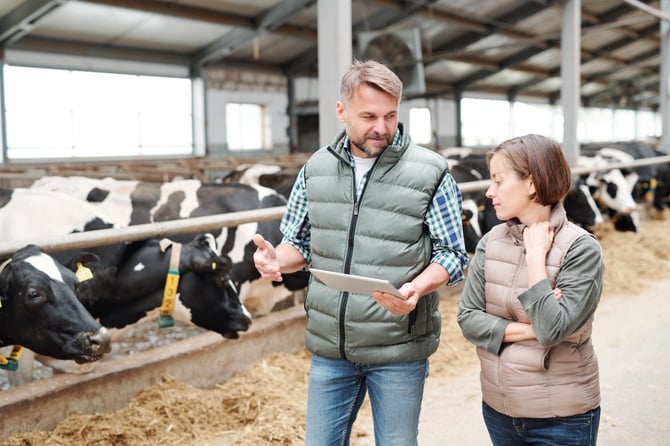
Eight Cutting Edge Farm Management Tools
Farm information management is a critical aspect of modern agriculture. It involves collecting, analyzing, and using data to improve the efficiency and productivity of agricultural operations. In recent years, technological advancements have led to the development of new tools that can help farmers make more informed management decisions and improve their bottom line.
New Tools in Farm Information Management
1. Precision Agricultural Software
Precision agriculture software allows farmers to collect and analyze data from weather stations, soil sensors, and yield monitors. The information can then get used to create detailed maps of the farm and make more precise recommendations for seed planting, fertilization, and pest management.
2. Livestock Monitoring Systems
Livestock monitoring systems use technology such as RFID tags and sensors to track the location and activity of individual animals. This system can help farmers identify potential health issues early on and make more informed decisions about feeding, breeding, and other management practices.
3. Drones
Drones can quickly and easily collect data on crop health, soil moisture, and other factors important for crop production. The information can then get used in making more informed decisions on irrigation and fertilization.
4. Stream Gages
Stream gages are units that are placed in streams to collect water levels. This data can then determine areas where droughts, floods, or other hydro-physical events can affect crops.
In recent years, stream gage models have been integrated with weather stations to create information systems for more precise forecasts of crop health in specific regions.
5. Mobile Farming Units
Mobile farming units increase the efficiency of rural operations by allowing farmers to carry their entire operations with them. These units can be solar-powered and equipped with soil, water, and temperature sensors that allow farmers to learn about their crop's health.
6. Robotics and Automation
Robotics and automation have begun to transform the way farmers manage their operations. Automated tractors, for example, can be used to plow and plant fields with greater precision and efficiency. Milking robots like Boumatic's OneView systems can also help farmers milk effectively, improving milk production and reducing labor costs.
7. Automated Irrigation Systems
Automated irrigation systems allow farmers to optimize the use of water and other resources for irrigation. Additionally, it helps farmers to manage their crop water requirement more precisely and get more yield out of their fields.
8. IoT-based Sensor Networks
Internet Of Things-based sensor networks monitor and collect real-time data on various environmental parameters, such as temperature, humidity, and soil moisture. This information can then optimize crop growth and yield.
Importance of These Tools in Agriculture
1. Improved Efficiency
These new tools can help farmers make more precise and accurate decisions about their operations, improving efficiency and increasing productivity.
2. Reduced Costs
Automation and precision agriculture can help farmers reduce costs by using inputs like seed, water, and fertilizer more efficiently. Additionally, livestock monitoring systems can help farmers identify health issues early on and take steps to prevent them, reducing veterinary costs.
3. Better Resource Management
These tools can help farmers make better use of resources such as water, land, and labor. For example, precision agriculture software can help farmers create detailed maps of their fields that identify areas where irrigation or fertilization is needed most.
With these new technologies and data integration, farmers can determine what crops work best on specific soil types, manage their livestock more effectively, and save money on inputs by using them more efficiently.
Contact us for more information about these tools and their potential uses in today's farming operations.
Hannah@digitalprpro.com
|